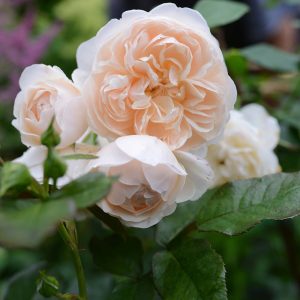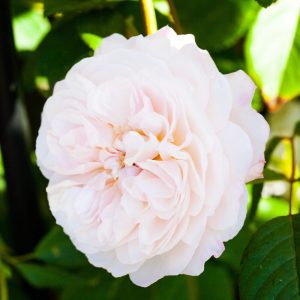Description
Polemonium caeruleum ‘Alba’ is a cultivar of the Polemonium caeruleum, commonly known as Jacob’s Ladder. This cultivar is known for its clusters of white flowers that bloom in late spring and early summer. The foliage is green, and the plant is hardy and easy to grow. It is a clump-forming perennial that can reach a height of about 60-90cm (2-3ft) and a width of about 30-45cm (1-1.5ft). The cultivar name ‘Alba’ refers to the white color of the flowers.
It is commonly used as an ornamental plant in gardens and landscapes, it can be used in mixed borders, as a mass planting or as a cut flower. It prefers full sun to part shade, and well-drained soil. The foliage of this cultivar is evergreen and feathery, adding a nice texture to the garden. It is not known to be toxic to animals.
Key Facts
- Common Name(s):White Jacob’s Ladder
- Hardiness:Fully hardy
- How big will I get? Polemonium caeruleum ‘Alba’ can grow to a height of 1m and a spread of 0.5m.
- Did You Know That:The common name “Jacob’s ladder” comes from the fact that the leaves resemble the rungs of a ladder?
Plant Calendar
A rough guide to how this plant will change through the year.
| Jan | Feb | Mar | Apr | May | June | July | Aug | Sept | Oct | Nov | Dec | |
| Flowering Time | 
| 
| ||||||||||
| Foliage Colour |  |
 |
 |
 |
 |
 |
 |
 |
 |
| J | F | M | A | M | J | J | A | S | O | N | D |

| 
| ||||||||||
 |
 |
 |
 |
 |
 |
 |
 |
 |
Care Guide

Soil Requirements
Polemonium caeruleum ‘Alba’ prefers moist but well-draining soil. This plant can grow in soil with a wide range of pH levels, it is not picky about the pH level of the soil.

Best Position
Polemonium caeruleum ‘Alba’ can handle either an exposed or a sheltered position and can cope with either full sun or partial shade.

Maintenance
Polemonium caeruleum ‘Alba’ should be cut back after it finishes flowering will promote growth the following year by redirecting energy from seed production and foliage maintenance to root growth.

Pest, Diseases and Wildlife
Polemonium caeruleum ‘Alba’ is generally pest free, it can be vulnerable to certain diseases such as powdery mildews. It is not considered to be toxic.





